Dancers and choreographers are creating alternatives to share their work as many performances have been canceled due to social distancing guidelines imposed during the COVID-19 pandemic.
Choreographer Chou Shu-yi (周書毅) said this month that he started thinking about how to put on performances that would be shared experiences.
“This is not just about me. The pandemic has stalled globalization and touring internationally has to be cut to a minimum,” said Chou, who has had several events canceled since finishing a choreography project in Singapore in February.
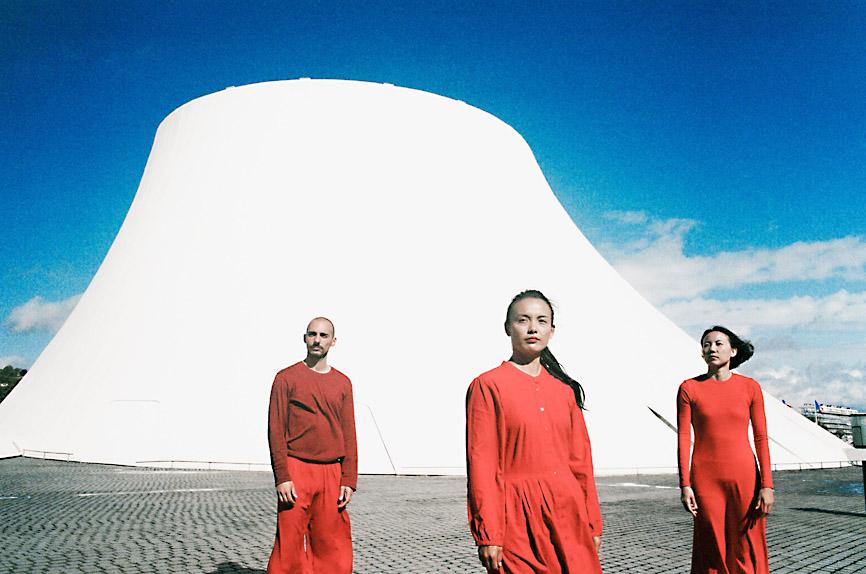
Photo courtesy of Chou Shu-yi
Chou said he looked to artists at home and rebooted his Next Choreography Project, which had been on hold for more than five years.
He launched the 2020 Unfolding Futures-Body Motion Short Film Festival as part of the rebooted project, showcasing how successive generations of choreographers and dancers have used the body to convey meaning.
The festival, which is to be held across three Fridays starting this week at Huashan 1914 Creative Park in Taipei’s Zhongzheng District (中正), is to include 17 short films of the early works of prominent artists and 17 short films chosen from 75 submissions from around the world, a list published by organizers on Saturday showed.
Tickets are available at www.accupass.com/go/Unfoldingfutures.
Meanwhile, a dance exhibition that has been performed at the National Taichung Theater since April 11 is one the few Taiwan International Festival of Arts events not to have been canceled.
Using augmented reality, the Horse dance company has been presenting the latest work of its 10-year “FreeSteps AR Yours” project that started in 2013. There are no live performances. Instead, visitors use mobile devices to view 12 pre-recorded dance pieces at points scattered across the venue to give them different perspectives.
For groups of two or more, one person can watch the video while the others participate in the dance, creating an immersive experience, the venue said.
“The singularity of performing arts is tough to overcome. Even with the same dancers and the same steps, the performance will differ slightly,” Horse general director and choreographer Su Wei-chia (蘇威嘉) said.
“When we sit down, our viewing angle is fixed. Even if you change your seat, you cannot re-see what you just saw,” he said.
The exhibit, which runs through May 24, also utilizes the curved structure of the theater, which was deigned by Japanese architect Toyo Ito.
Entry is free, but the theater is following health authorities’ social distancing guidelines and requires all visitors to wear a mask. Visitors are also required to submit their contact information.
In the online world, some dance groups have streamed their performances, including the Bulareyaung Dance Company and B.Dance.
B.Dance has streamed a performance every Sunday at 8pm since April 5.
Dancers and musicians participate in a music replay challenge that the National Kaohsiung Center for the Arts (Weiwuying) launched early this month.
While the original challenge was for musicians to play the entire piece or an except from Johann Sebastian Bach’s Musical Offering (BWV 1079), Weiwuying said it noticed that dancers were performing as the music played and were sharing the videos.
One of the dancers highlighted by Weiwuying is Huang Kuan-jung (黃冠榮), who filmed a video of himself dancing to the Bach piece in the staircase of an apartment building.
“I am grateful that I’m still able to release my emotions through dance,” Huang wrote on Facebook on Saturday, adding that the global situation has him feeling uncertain and anxious.
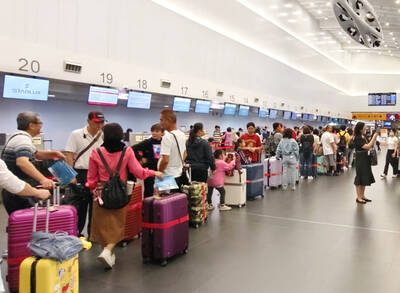
Three Taiwanese airlines have prohibited passengers from packing Bluetooth earbuds and their charger cases in checked luggage. EVA Air and Uni Air said that Bluetooth earbuds and charger cases are categorized as portable electronic devices, which should be switched off if they are placed in checked luggage based on international aviation safety regulations. They must not be in standby or sleep mode. However, as charging would continue when earbuds are placed in the charger cases, which would contravene international aviation regulations, their cases must be carried as hand luggage, they said. Tigerair Taiwan said that earbud charger cases are equipped
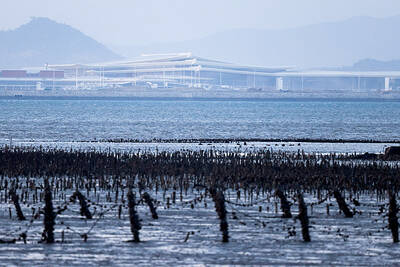
UNILATERAL MOVES: Officials have raised concerns that Beijing could try to exert economic control over Kinmen in a key development plan next year The Civil Aviation Administration (CAA) yesterday said that China has so far failed to provide any information about a new airport expected to open next year that is less than 10km from a Taiwanese airport, raising flight safety concerns. Xiamen Xiangan International Airport is only about 3km at its closest point from the islands in Kinmen County — the scene of on-off fighting during the Cold War — and construction work can be seen and heard clearly from the Taiwan side. In a written statement sent to Reuters, the CAA said that airports close to each other need detailed advanced
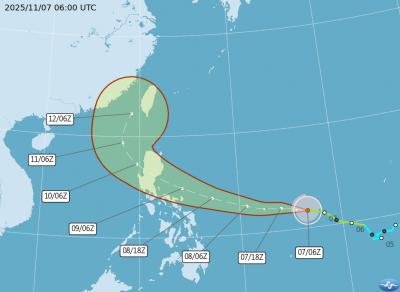
Tropical Storm Fung-Wong would likely strengthen into a typhoon later today as it continues moving westward across the Pacific before heading in Taiwan’s direction next week, the Central Weather Administration (CWA) said. As of 8am, Fung-Wong was about 2,190km east-southeast of Cape Oluanpi (鵝鑾鼻), Taiwan’s southernmost point, moving westward at 25kph and possibly accelerating to 31kph, CWA data showed. The tropical storm is currently over waters east of the Philippines and still far from Taiwan, CWA forecaster Tseng Chao-cheng (曾昭誠) said, adding that it could likely strengthen into a typhoon later in the day. It is forecast to reach the South China Sea
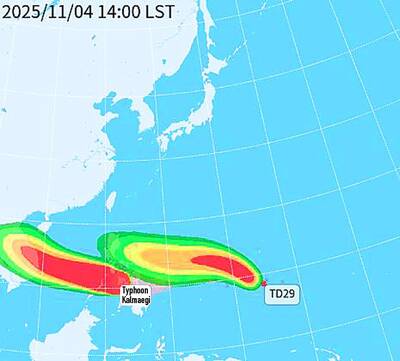
WEATHER Typhoon forming: CWA A tropical depression is expected to form into a typhoon as early as today, the Central Weather Administration (CWA) said yesterday, adding that the storm’s path remains uncertain. Before the weekend, it would move toward the Philippines, the agency said. Some time around Monday next week, it might reach a turning point, either veering north toward waters east of Taiwan or continuing westward across the Philippines, the CWA said. Meanwhile, the eye of Typhoon Kalmaegi was 1,310km south-southeast of Oluanpi (鵝鑾鼻), Taiwan’s southernmost point, as of 2am yesterday, it said. The storm is forecast to move through central